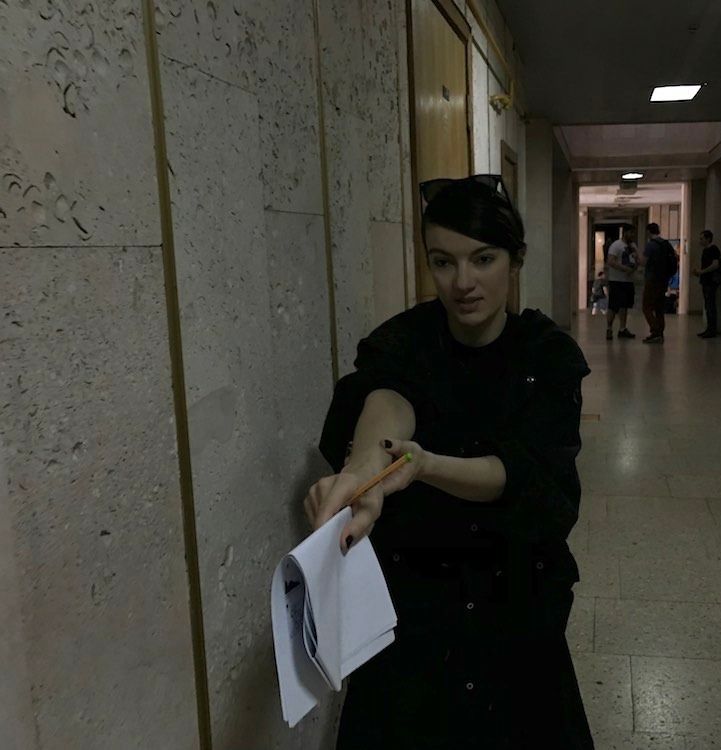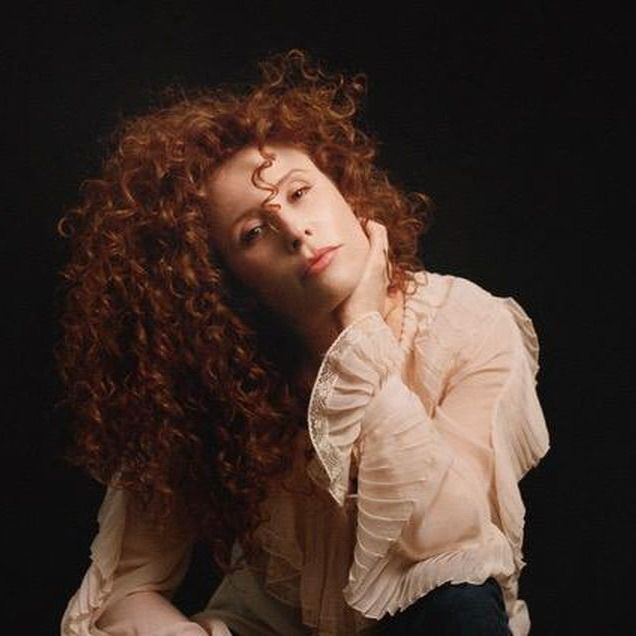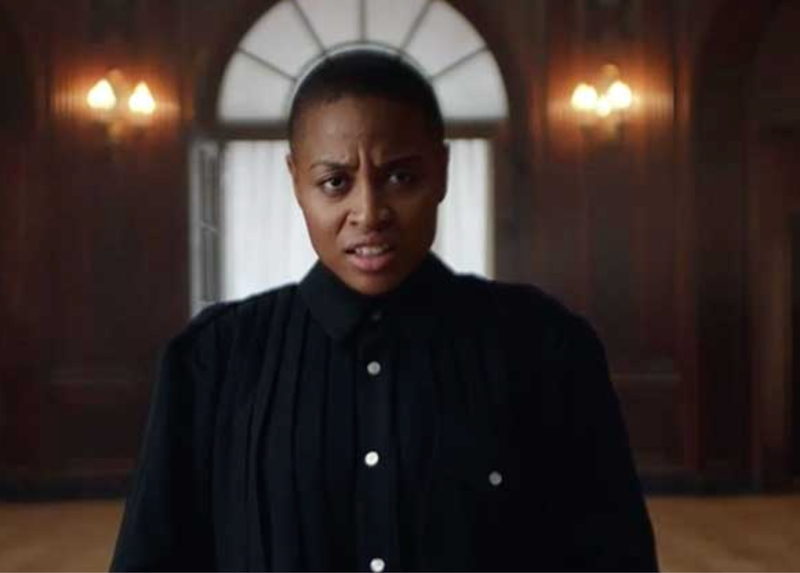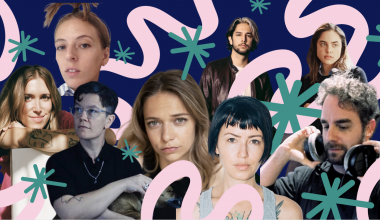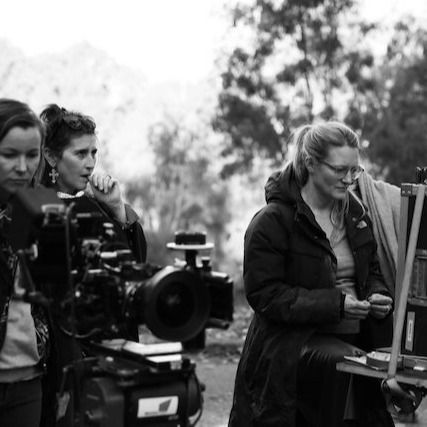Director Fleur Fortuné, our Free The Bid France ambassador, is quite the wild dreamer. In “Dream Thieves,” her latest 13-minute commercial masterpiece for mobile financial service KOHO, Fleur takes viewers on a heart-pounding journey through an alternate universe.
A team of armed forces barge through the homes of citizens residing in isolating, identical skyscrapers; using LED-light helmet devices, they forcibly extract dreams from the civilians’ brains. Fleur builds the narrative with a masterful sense of pacing, carefully mounting suspense and then breaking tension by shifting between dreams and reality. Fleur’s hyper-specific attention to visual detail is also a key element to the film’s ambience—the resulting spot is filled with arresting images that stick with you even after the film is over.
It’s no surprise that Fleur’s epic short was selected as a Vimeo Staff Pick—“Dream Thieves” is bursting at the seams with creative vision, grounded by Fleur’s keen directorial sensibilities.
We spoke with Fleur about how tight budgets can sometimes fuel leaps of imagination, her fascination with alternate realities, and the cultural nuances of realizing Free The Bid’s mission within the French advertising industry.
“Dream Thieves” is such a remarkable short film—how were you initially tapped to work on this project?
Fleur Fortuné: The concept was very innovative, surreal and narrative. In my previous projects, I had already worked on similar kind of imaginary worlds, more or less abstract (“Birds in the Trap,” for Travis Scott, “Ivory,” for Movement, “Midnight City,” for M83) and the agency’s visual references were really close to mine. It was pretty obvious for all of us that we had to work together, even though the budget was the tricky part. We all wanted to do our best to create a remarkable piece.
How did the idea evolve from its original form through pre-production? What did you do as a director to prepare for the shoot?
I first started to work on the script and the world the story was taking place in. I changed the universe in order to make it more realistic, closer to nowadays, so that the audience could relate to it and more easily empathize with the characters. Then I worked on the narrative part, to build up more suspense and tension, more danger, create interesting and rich characters, craft dialogue, etc. Finally, as I usually do, I did a lot of research on the visual aspect in order to create visual effects that could be credible and feel real.
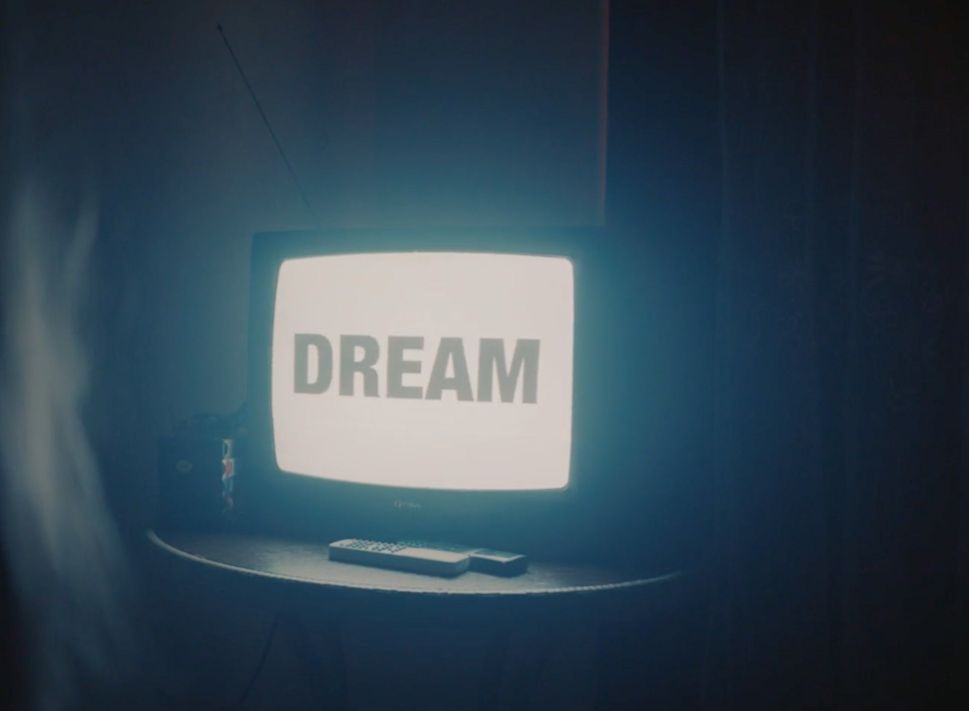
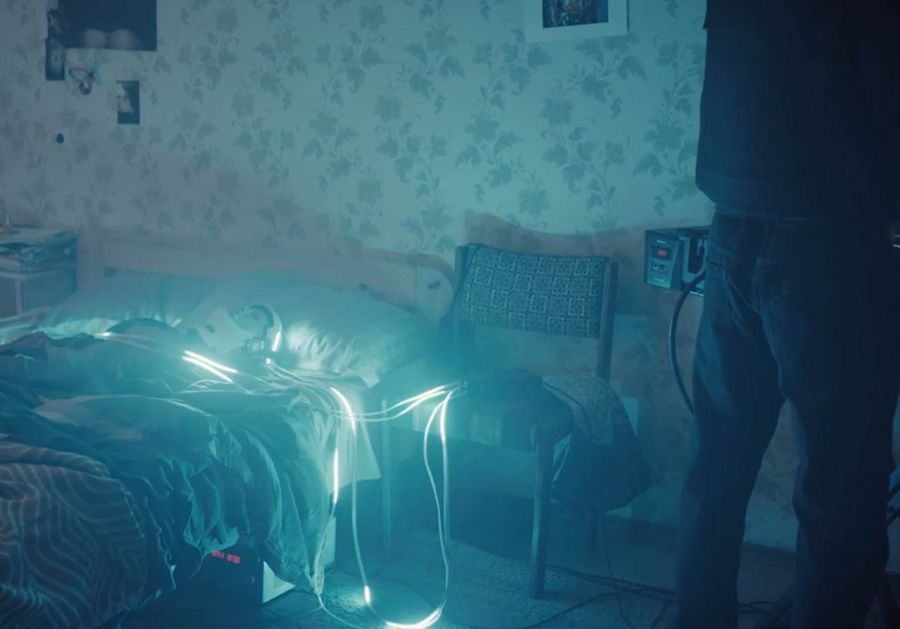
The film has faint echoes of Black Mirror, and Eternal Sunshine of The Spotless Mind, yet stands alone as its own unique statement. What references were on your moodboard when conceptualizing the look and feel of the short?
Neither of those two! Even though I really like Eternal Sunshine, and Black Mirror, my visual references are usually older than that, and I mix different kinds of media: features, photography, news, etc. For the Dreams, THX 1138 was in my mind in order to represent the blank empty mind that is left behind the dream thieves. The virtual mask used in the film was a mix of Minority Report and dentist’s or surgeons’s accessories, as I didn’t want them to be too futuristic. The LED lights were a smart and inexpensive idea from the Art Director, in order to represent the movement of dreams sucked out of people’s minds. Sometimes, the tight budget helps you find clever solutions, and most of the time my references evolve with the production process; depending the locations and the cast, you have to stay open minded. For example, I was looking for a more American kind of house for the mother’s dream, but in the end, the house we found was more the kind you would see in Tarkovsky‘s “Stalker,” and I think it’s way better. We kept it exactly as it was—didn’t change a single piece of furniture or curtain.
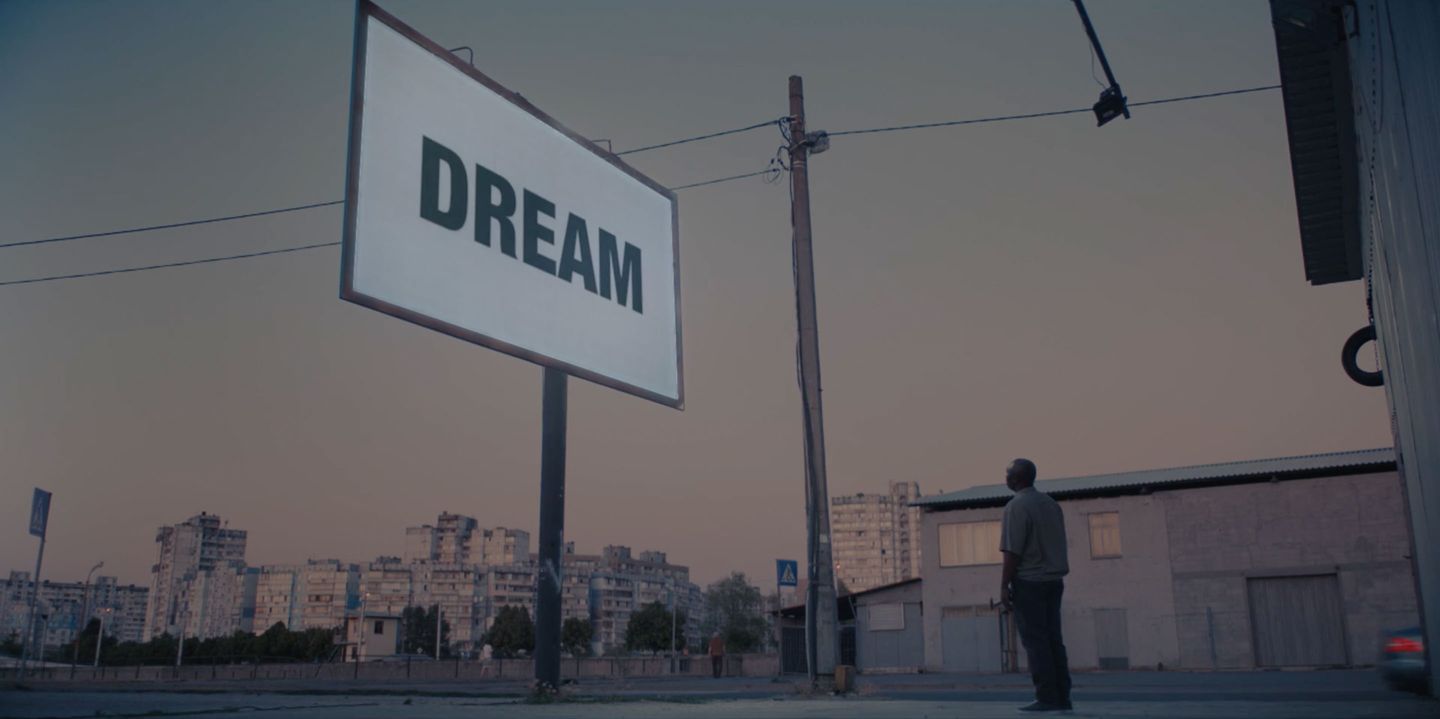
In recent years, there have been a lot of visions of the bleak near future depicted onscreen. How does the world of your film comment on our current society? Does this films’ sci-fi lens allow for different kinds of conversations?
We scouted a lot in Kiev, and even though it was a complicated decision, I decided to shoot in those giant urban hells with hundreds of towers lined up in the infinity. These exist in almost every country, and are a good representation of how we park poor and middle class people today on our planet—it is almost inhuman.
In terms of narrative, this concept is a tough critique of the bank and economic world system, so even if it is still a commercial, I hope it also allow different kinds of points of views on our society and how things work.
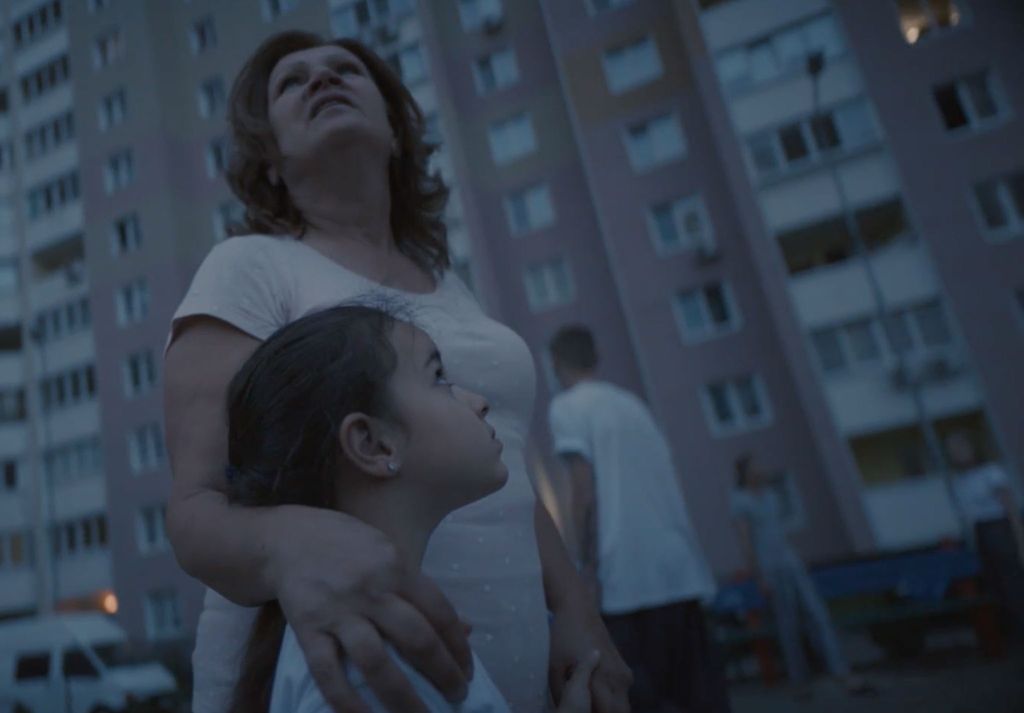
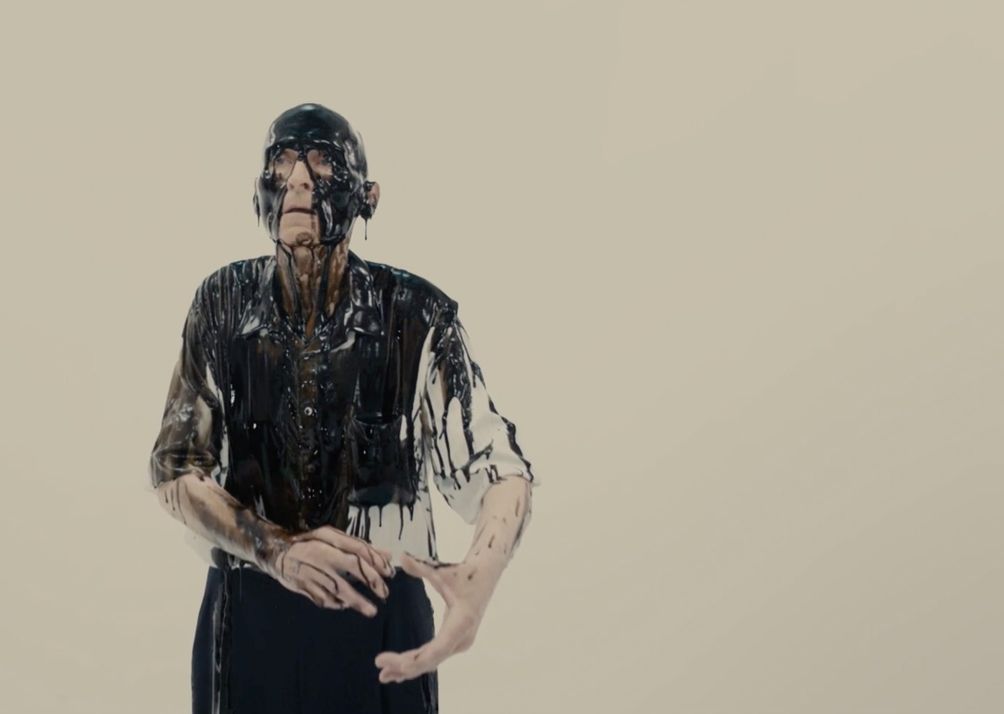
“Dream Thieves,” moves from a dystopian reality to a dream space. How did you handle the construction of these two separate worlds within the film—what choices did you make, in terms of camera motion, color, light, etc, to distinguish the two?
At the beginning, the sadness of the real world is represented without sun: almost no colors, cold. The camera movement is really slow and almost static, in order to contemplate the violence the inhabitants live in without interfering; the police, the bank commercials making everybody sleep and obey. So when the Dream Thieves commandos arrive, nobody notices them in the town, and the violence contrasts totally with the quietness.
Then the inhabitant’s interiors are very colorful and warm compared to the town. We cut from one apartment to another smoothly and softly, as if it’s the same apartment. It could be anyone . . . it could be us . . . until the commandos arrive there in the night, invading their homes, with their cold gun lights. We are now shooting hand held; it’s tough, cold and real.
The dreams are all shot Steadicam, 30 frame per second in order to give this slight surreal slow motion effect of a distorted reality. It’s beautiful warm and sunny again, until it is sucked out of people’s mind, and replaced with blank emptiness and thick black nothingness.
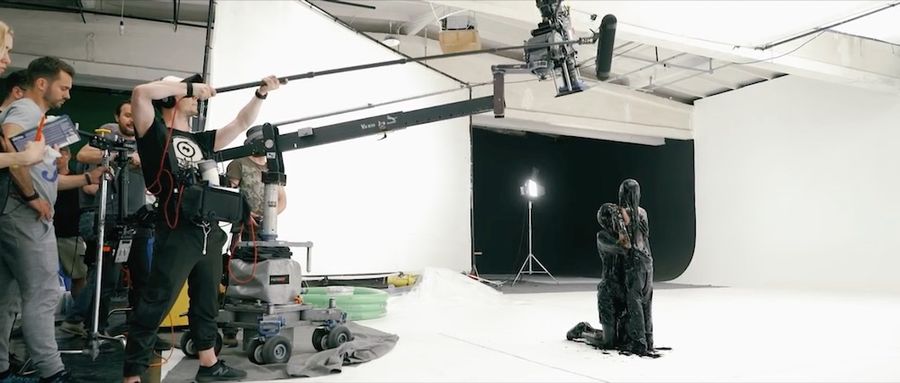
What was the casting like for this project? How did you work with the cast to coax out the performances you were looking for?
For the main roles, we needed to have English speaking actors for the ones that had dialogue, so we cast in London. As I didn’t have time to do rehearsal, the most important thing was the casting. When I saw Roseanna Leathley at the call backs, I knew she was made for the main role, and she was so creative and realistic in her acting. Our shooting schedule was so tight that I knew I wouldn’t have so much time on set. She took suggestions perfectly and was so easy to work with.
Did this project allow you to use any technology that was particularly exciting?
The first time we talked about the project, Matias Boucard, the DP, mentioned the new Alexa LF and the amazing definition and range of colors we could get—as close as possible to film. Almost no one was working with this camera, as it is really new, so we could use it to get something different. Then he had the idea to create a different format, in order to get as much as possible of the lens we could get: that’s why instead of the usual 2:35 cinema format, we have a 2:1 format which is higher and less wide but more of the lens distortion on the sides.
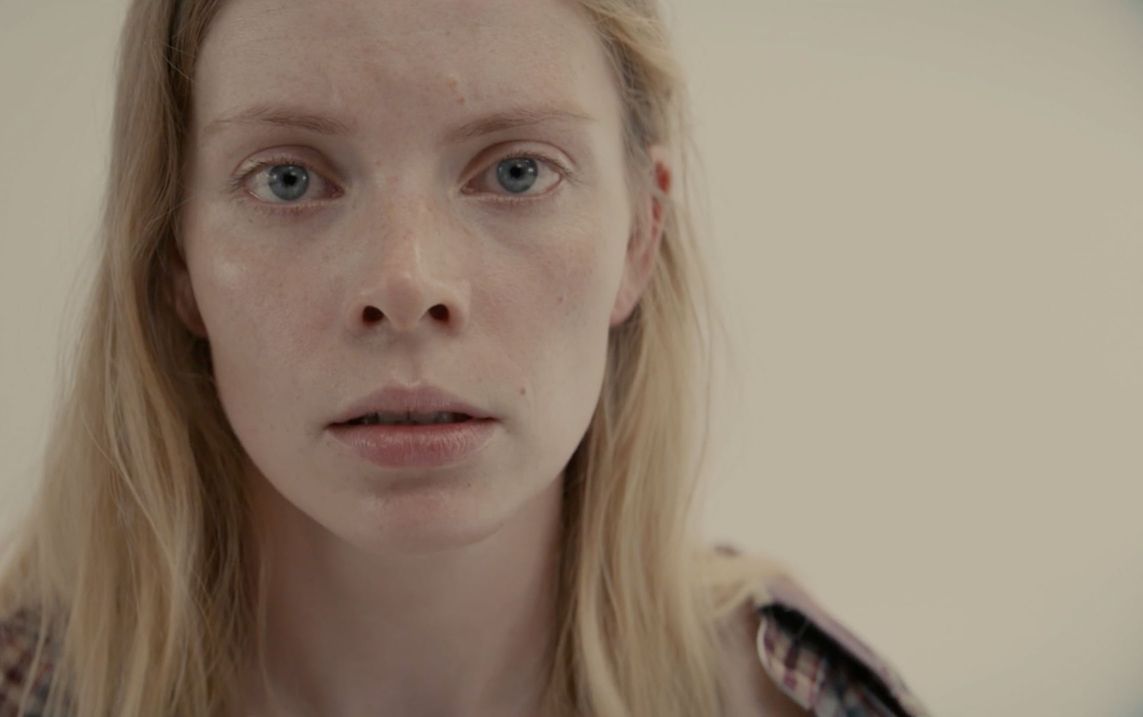
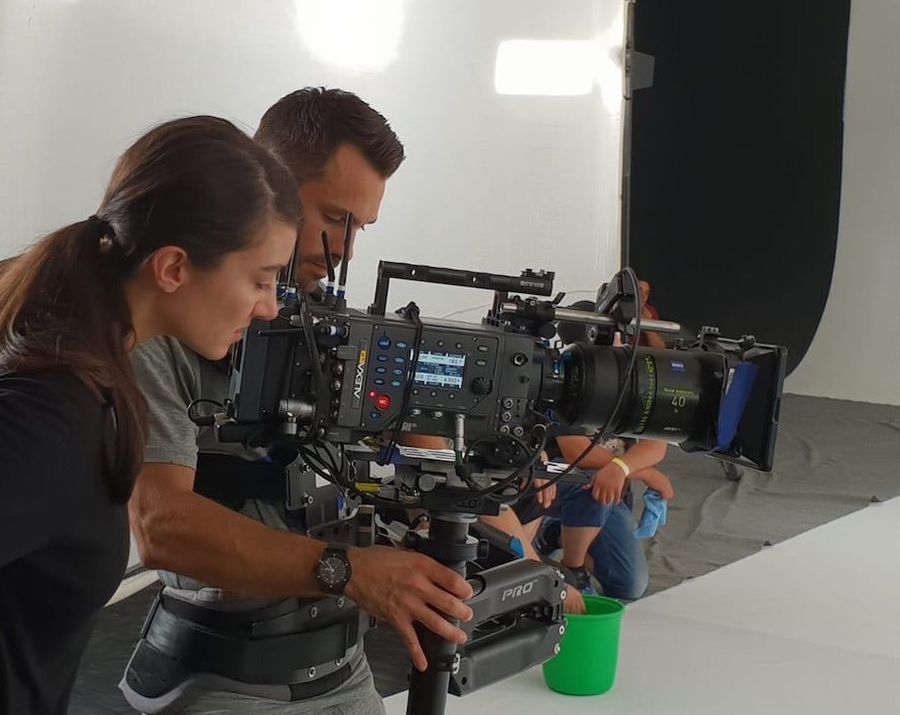
Did the shoot pose any particular difficulties?
For sure! When you try to make five or six days worth of shooting happen in four, everything is complicated. Our planned shooting schedule was 16 to 17 hours of shoot per day. Add to this the preparation, the time to be ready, trucks, etc. . . . by the end of the shoot, we were totally exhausted.
The fact that I chose to shoot in real towers where people live, as opposed to abandoned or empty buildings, was the main difficulty, though.
How much of this film came together during the post-production process?
Only the sound part created by Kouz Productions. They did a huge amount of work on this. The music and the sound effects were all created after the shoot; it all came together during the edit. Even after the post production, they helped with the narrative for the commercials and radios at the beginning (the agency even made some voices for this).
But all the post production was invented before the shoot, some of it even shot live, like the subliminal messages on the TV or on phones. Instead of using real commercials in the streets and on TVs, I thought about the hidden commercials messages they had in They Live, from Carpenter: it was a faster and cheaper way to understand the message. I then wanted the kind of really fast flicker animation you have in the opening titles of Gaspard Noe‘s Enter The Void.
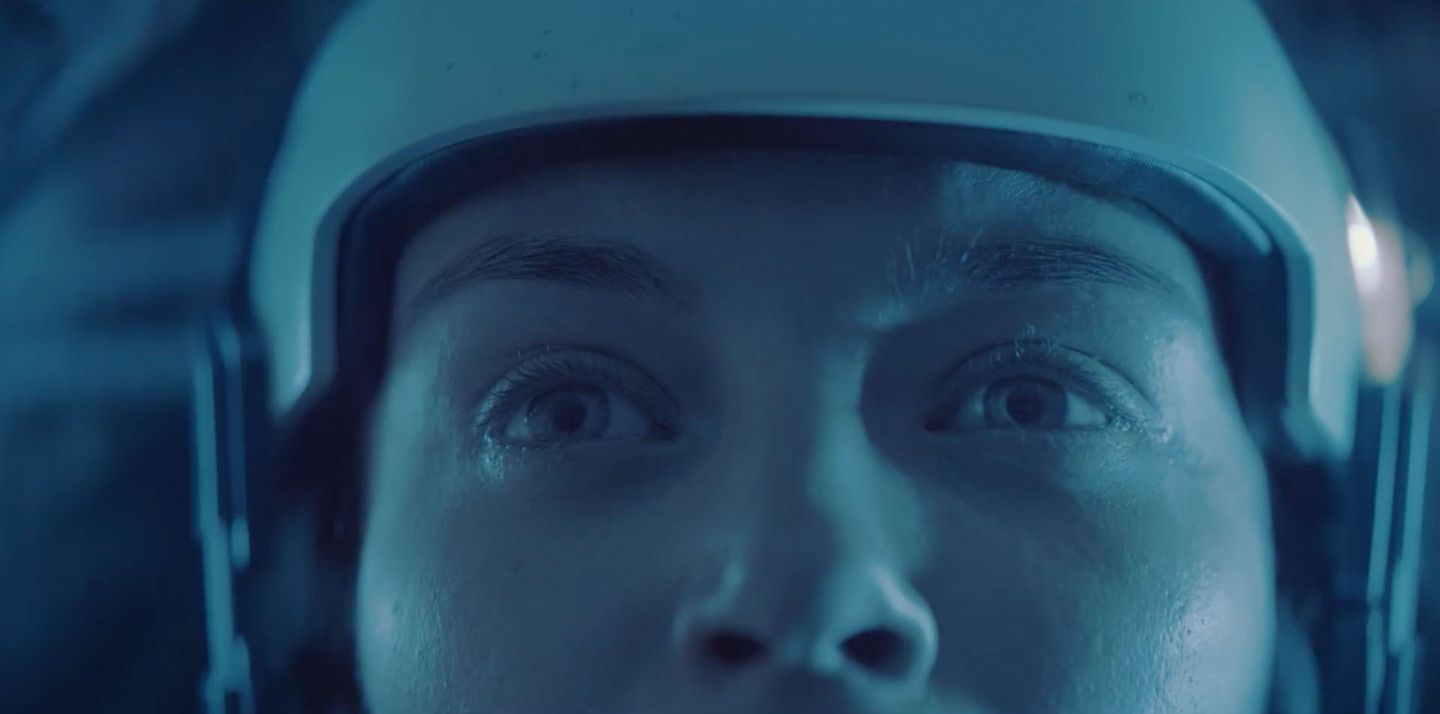
Let’s talk about your career trajectory! How did you get your start as a director?
I started in the music video industry. After art school, we began making music with friends without money like us, and created the duo FLEUR & MANU with my former partner, in order to create and combine our common love for music. Our first music video was made with less than 1000 euros!
What kinds of storytelling do you find yourself drawn to?
Mystery, abstraction, thriller, anticipation…most of the stories I relate to and I like to tell feature alternate realities. But I don’t like to chose one genre or another; what is most interesting for me is to show a different point of view, to see beyond the frontier.
What pieces of directorial work from the past would you say are the best representations of your vision as a filmmaker?
It’s difficult to choose one, but I’d say that the project that best represents my different universes would be the video for Travis Scott’s “Birds in the Trap.”
We’re proud to have you as our Free The Bid France ambassador, adding to our growing number of international ambassadors as Free The Bid expands its global footprint! Can you explain the process so far of coming on board, identifying French women directors for our database, and making on the ground connections? Since Free The Bid France has just recently launched, what are the next steps?
I have to say that my first realization was to understand that we were so far behind in France. I was a little disappointed by my country! Then I reached out to all the French female directors I knew, especially the one who are not signed to production companies, the one that need more help. I also asked friends about women directors they knew, and it began a kind of chain. I’m hoping to reach out to more of them, because we are so few!
The next step is to make brands commit to get more female directors to bid, then the production companies will sign more, etc. It works that way!

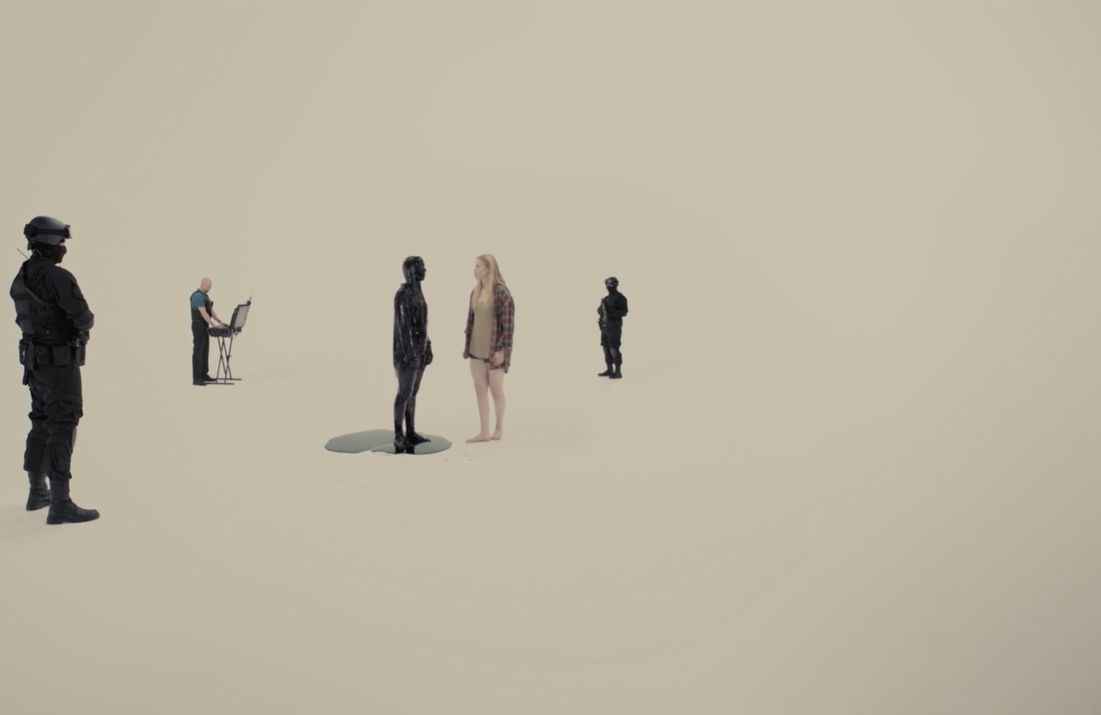
Are there any hurdles to be overcome for women directors that are unique to the French advertising market?
I would say that first it is very difficult for French people to realize that gender discrimination truly exists in our country. We are very proud: we are the country of the Rights of Man and of the Citizen, freedom, equality, how could there be such a thing in France?! Haha! Even when you show alarming statistics (in the ad industry, there is 1 woman director to every 30 men), people don’t want to admit it.
The second thing is that most people in France are against the concept of “positive discrimination." You have to prove your value to the society—it is not the society’s duty to facilitate your integration and help prove your value. But this is changing little by little, as people start to understand that these ways of thinking come from the top of the pyramid!
Another big difference to the USA is communitarianism. In France, it goes against the laws of the République in a certain way, as the state is supposed to stand up for and protect all of us equally. We are all French before being a woman, a man, black, white, etc. So people usually see organizations like Free the Bid as enemies against our society, but this attitude is now changing! I’m pretty positive about the future.
Why is it so crucially important to see a range of diverse perspectives represented on film, both onscreen and behind the scenes?
People complain that they always see and watch the same things . . . but you need to get different points of view on stage to create different films! It is as simple as this.
